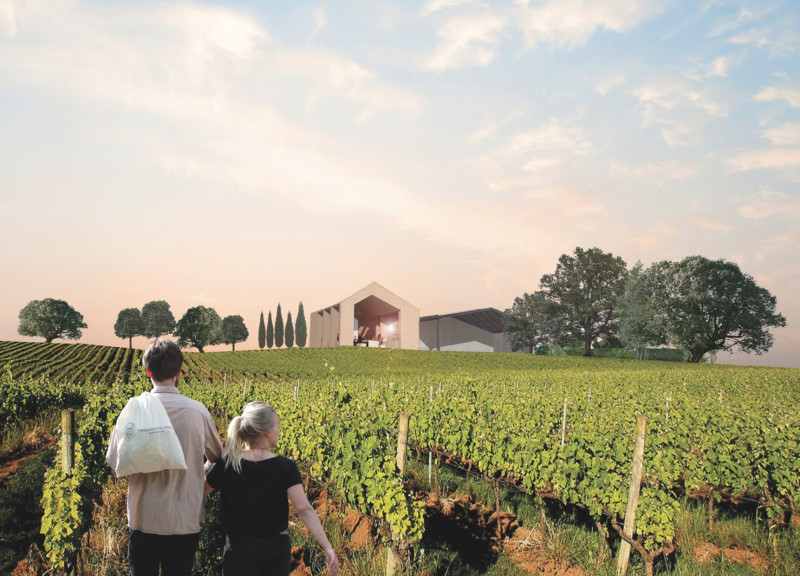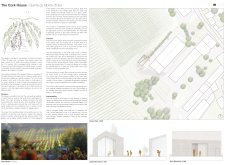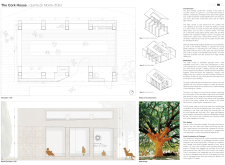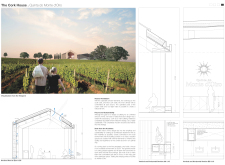5 key facts about this project
Sustainability is a central theme in the architecture of The Cork House. It employs locally sourced materials, primarily cork, which serves as the main external cladding. This choice reflects a commitment to eco-friendly practices. Cork provides excellent thermal and acoustic insulation, reinforcing the building's energy efficiency. The structure incorporates engineered wood for its framing, aligning with modern sustainable building trends. Large glass panels are strategically placed to enhance natural light and maintain a visual connection to the vineyard, allowing for unobstructed views.
The overall spatial organization within The Cork House prioritizes function and interaction. The design features a central communal area dedicated to wine tasting, promoting social engagement. This space is complemented by functional zones, such as kitchens and restrooms, which adhere to practical design principles. The architectural layout encourages exploration and movement, allowing visitors to experience the vineyard fully while interacting with the environment.
Unique design approaches set The Cork House apart from standard wine facilities. The use of cork as a primary material is not only visually appealing but also symbolizes the region's winemaking heritage. Further, the architecture showcases a thoughtful integration of indoor and outdoor spaces. By utilizing operable windows and overhangs, the structure facilitates natural ventilation, reducing reliance on mechanical systems and enhancing occupant comfort.
The Cork House also represents a new architectural narrative for winery spaces, focusing on cultural enrichment. It acts as a platform for community engagement, allowing visitors to appreciate the winemaking process and the surrounding landscape actively.
To gain a comprehensive understanding of The Cork House and its architectural significance, explore the detailed architectural plans, sections, and designs. These elements provide deeper insights into the project's innovative approaches and its functional design principles, showcasing how architecture can harmoniously blend with its environment.


























